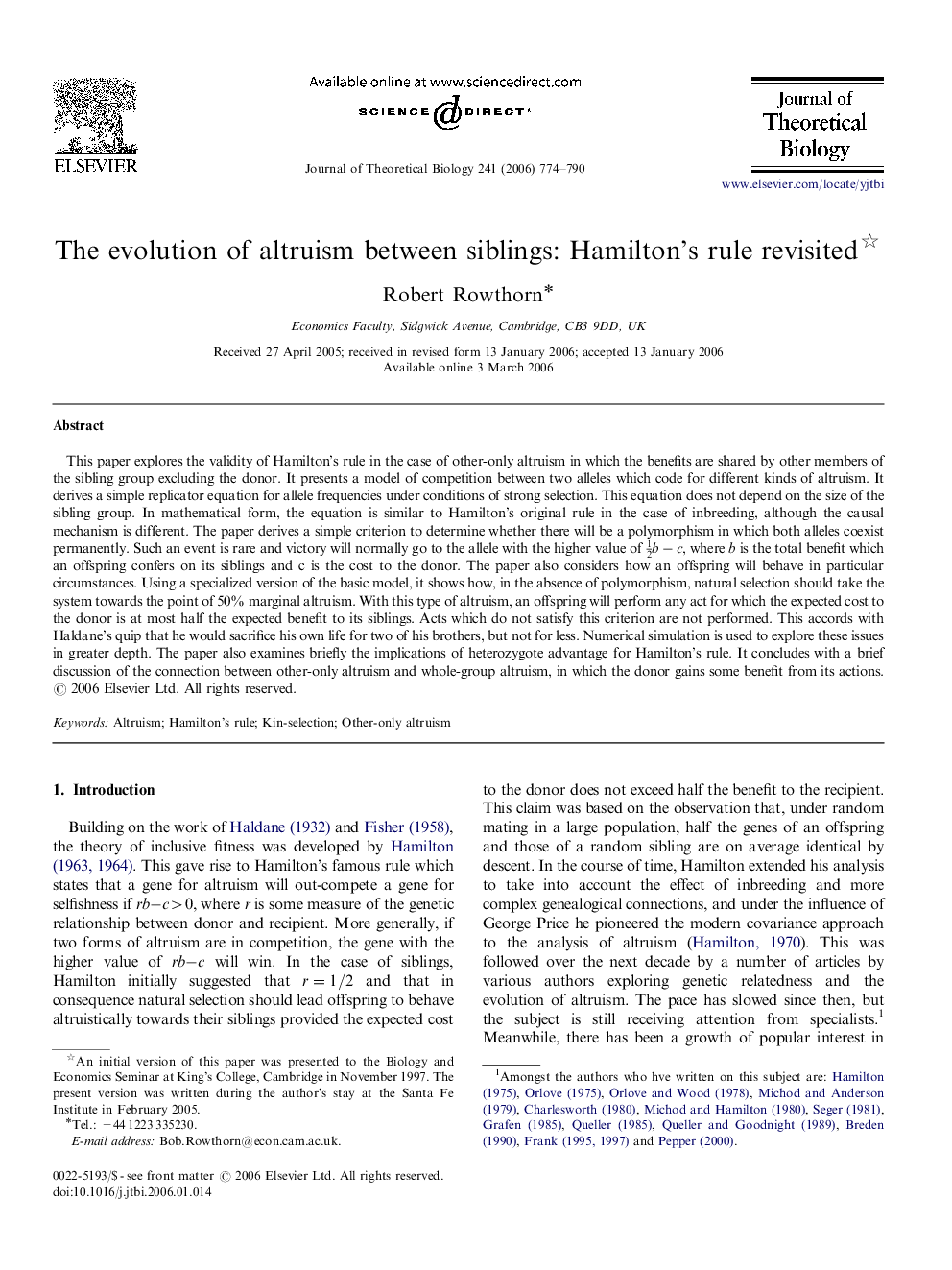| کد مقاله | کد نشریه | سال انتشار | مقاله انگلیسی | نسخه تمام متن |
|---|---|---|---|---|
| 4499452 | 1319031 | 2006 | 17 صفحه PDF | دانلود رایگان |

This paper explores the validity of Hamilton's rule in the case of other-only altruism in which the benefits are shared by other members of the sibling group excluding the donor. It presents a model of competition between two alleles which code for different kinds of altruism. It derives a simple replicator equation for allele frequencies under conditions of strong selection. This equation does not depend on the size of the sibling group. In mathematical form, the equation is similar to Hamilton's original rule in the case of inbreeding, although the causal mechanism is different. The paper derives a simple criterion to determine whether there will be a polymorphism in which both alleles coexist permanently. Such an event is rare and victory will normally go to the allele with the higher value of 12b-c, where b is the total benefit which an offspring confers on its siblings and c is the cost to the donor. The paper also considers how an offspring will behave in particular circumstances. Using a specialized version of the basic model, it shows how, in the absence of polymorphism, natural selection should take the system towards the point of 50% marginal altruism. With this type of altruism, an offspring will perform any act for which the expected cost to the donor is at most half the expected benefit to its siblings. Acts which do not satisfy this criterion are not performed. This accords with Haldane's quip that he would sacrifice his own life for two of his brothers, but not for less. Numerical simulation is used to explore these issues in greater depth. The paper also examines briefly the implications of heterozygote advantage for Hamilton's rule. It concludes with a brief discussion of the connection between other-only altruism and whole-group altruism, in which the donor gains some benefit from its actions.
Journal: Journal of Theoretical Biology - Volume 241, Issue 4, 21 August 2006, Pages 774–790